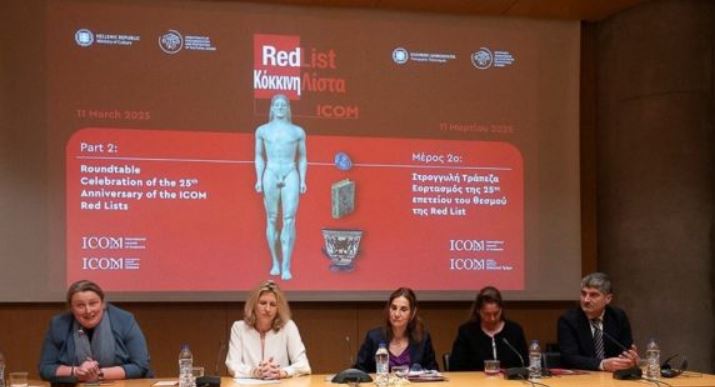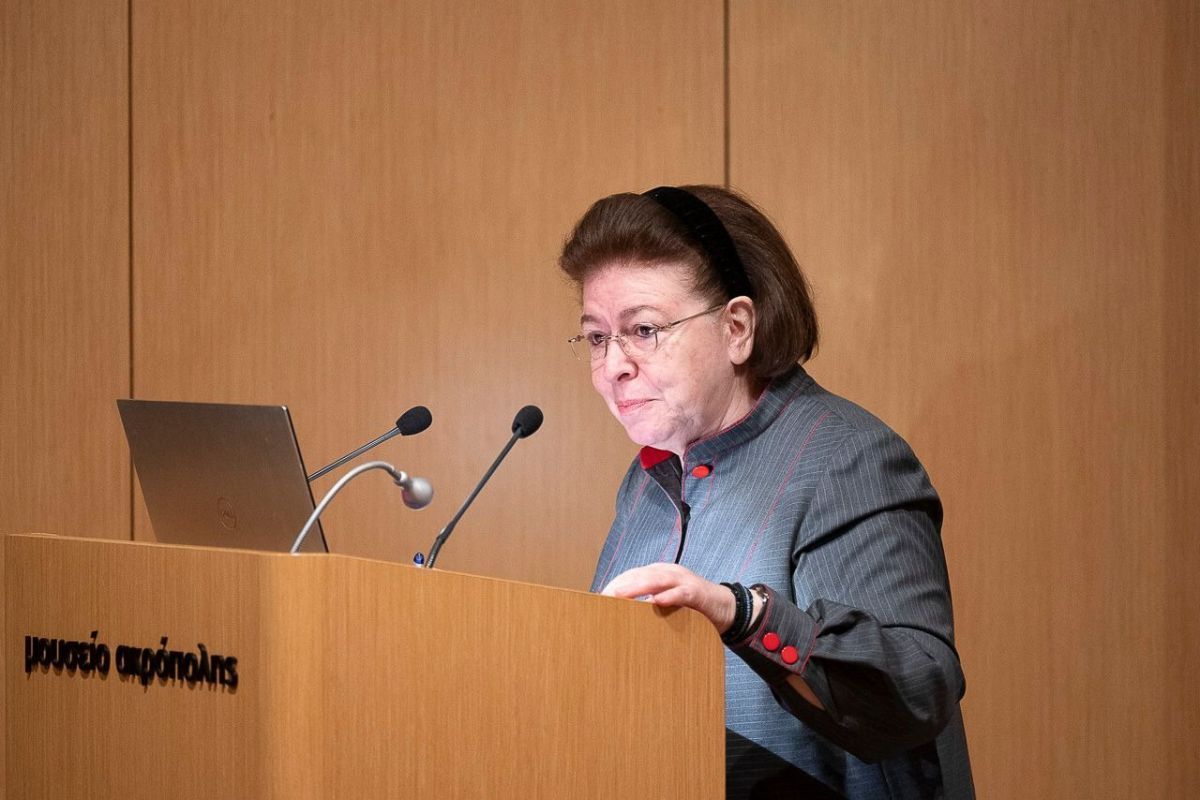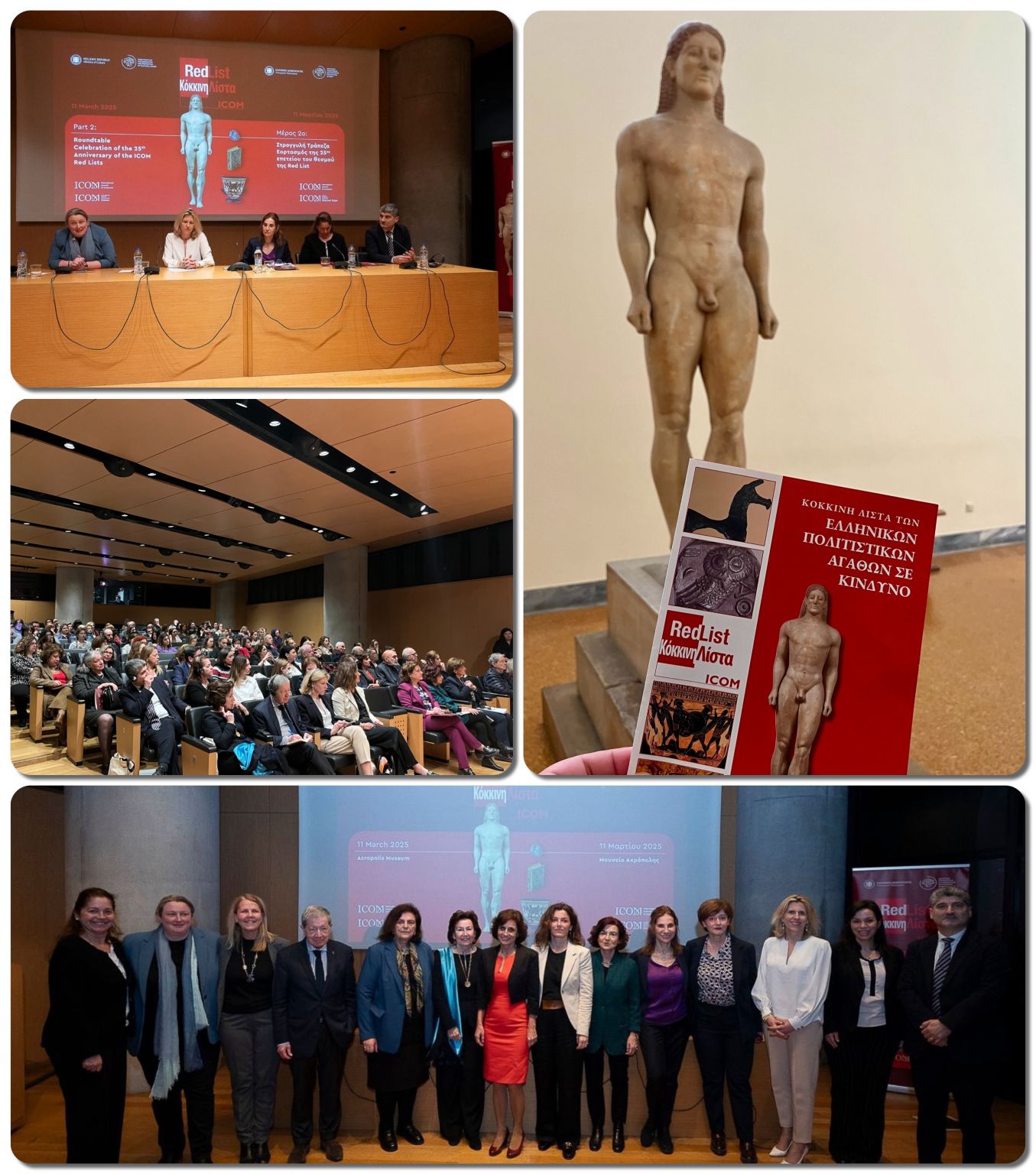The Greek Red List was presented by ICOM’s Greek office in collaboration with the Greek Culture Ministry, with support from the ICOM Secretariat. A roundtable discussion was held to mark the 25th anniversary of the Red List initiative, attended by representatives from UNESCO, INTERPOL, UNIDROIT, and legal advisors, with Greece represented by Dr. Artemis Papathanassiou, Head of the Special Legal Department of the Ministry of Foreign Affairs of Greece.

From left to right: Sophie Delepierre (Head of Heritage Protection Department ICOM Secretariat), Sunna Altnoder (Chair of Unit, Illicit trafficking and return and restitution, Cultural Sector, UNESCO), Artemis Papathanassiou (Head of the Special Legal Department of the Ministry of Foreign Affairs of Greece, Marina Schneider, Tiziano Coiro (Coordinator Works of Art Unit, INTERPOL)
Greece has been included in the International Council of Museums (ICOM) Red Lists of countries, an initiative aimed at preventing the illicit trafficking of cultural artefacts.
“Greece’s commitment to cultural heritage protection is anything but new. For decades Greek authorities and dedicated professionals, such as ICOM Greece, have joined forces to develop a strong legal framework and operational tools to protect their immense cultural heritage. With the new ICOM Red List for Greek Cultural Objects at Risk, another stone is added to this edifice of cultural heritage protection.” Sophie Delepierre, Head of ICOM Heritage Protection Department.
ICOM (International Council of Museums) and ICOM Greece, in cooperation with the Hellenic Ministry of Culture, launched of the ICOM Red List of Greek Cultural Objects at Risk, a significant tool designed to help fight the illicit trafficking of Greek cultural heritage.
The Red Lists categorize cultural objects most at risk of theft and illegal trade, providing a valuable tool for law enforcement and customs officials to identify and protect vulnerable items.
“The illicit trafficking of antiquities and cultural goods remains a significant threat, both in times of peace and war,” said Greek Culture Minister Lina Mendoni at an event that took place at the Acropolis Museum. “This is not just illegal activity but a highly organized international crime network linked to terrorism.”

Minister Mendoni highlighted the need for international cooperation, sharing information, and using both human and material resources to combat this crime.
The newly established Greek Red List is designed to help identify cultural objects most vulnerable to trafficking. Unlike lists of stolen items, it features artefacts commonly targeted by traffickers, many of which are now in Greek museum collections or recognized institutions. Some of these objects were repatriated or voluntarily returned by foreign institutions.
ICOM has been publishing Red Lists since 2000, collaborating with national and international experts to cover regions most at risk of cultural trafficking - areas with rich ancient civilizations.
